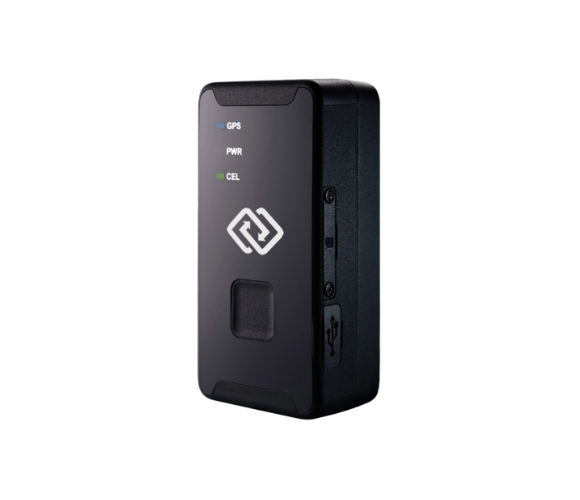What Are The Most Crucial Things To Think About When Buying Items For Airtags On Android?
If you’re in search of Android product finders that are compatible with AirTag (like Samsung SmartTag and Tile), then there are a few things to consider. Key trackers as well as luggage tracking devices as well as smart tags are all important to think about.
1. Device Compatibility
Android Integration Trackers with Android Integration: Make sure that the one you select is compatible with Android, especially if it’s a product like Tile or Samsung SmartTag. (Samsung SmartTag is compatible with Samsung’s ecosystem). Certain devices can only be used with certain apps or phones.
Bluetooth or Ultra-Wideband (UWB): Trackers using Bluetooth Low Energy (BLE) work with the majority of Android devices, while UWB is more precise but only available on select high-end handsets (e.g., Samsung Galaxy phones that have UWB capability).
2. Tracking Range
Bluetooth Range: Bluetooth allows most item finders and your phone to connect. In open spaces, the range advertised can vary from 100-400 feet. In densely populated areas or areas that have obstructions, the actual distance might be less.
Crowdsourced Network: Certain tracking devices, like Tile rely on a crowdsourced network to extend beyond Bluetooth. The app will provide you with anonymous location information if another user of the app is in close proximity to your device. You need to think about the extent of activity and how large the network of your device is in your locality.
3. Precision Finding Technology
UWB Certain trackers (e.g. Samsung SmartTag+) provide ultra-accurate, precise tracking of your location using UWB. You can locate items more precisely than Bluetooth alone. This technology is ideal for indoor tracking like finding your keys or wallet inside your house.
AR Tracking: Some advanced tracking systems make use of AR technology. (AR) that guide you through the camera on your smartphone to find your lost object. This feature could be accessible when the tracker and phone are compatible.
4. Size and Formfactor
Trackers with a compact design should be light and compact enough to easily attach to luggage, keys, or other valuables, without adding bulk.
Attachment: Pick trackers with loops or adhesives for attachment to keychains, bags, or backpacks.
Durability is important. Consider the longevity of the product and its material. It is important to choose a luggage or outdoor product that has a weather-resistant, sturdy design.
5. Battery Life
Are they rechargeable or replaceable? Some trackers have replaceable coin cells that can last for several months or even a whole year. Others come with rechargeable batteries. A longer-lasting battery reduces the requirement for maintenance.
Battery Notifications: Ensure that the tracker has the ability to inform you when your battery is low on power, so you can replace it or recharge it before it goes out of service.
6. Water Resistance
Waterproofing. Trackers that are attached to items like bags, luggage or other outdoor equipment must be water-proof, so that they can protect from spills and splashes. For durability in harsh environments, search for IP ratings (e.g. IP67).
7. Features and Apps
User-Friendly Application: The application is supposed to be simple and intuitive to use. The application should include useful functions, like the capability of finding items on a mapping, viewing tracking history, or setting up notifications.
Ringtone/Loud Detector: An inbuilt alarm or ringtone can be activated directly from the application to assist with locating missing items. The volume must be loud enough in different environments so that it can be heard.
Access shared: If you have shared an object (e.g. family vehicle, luggage) check if the application allows multiple users to monitor the tag.
8. Geofencing Notifications
Separation alerts: Certain trackers offer proximity alerts to inform that you’re moving away from an item that has been tagged (for instance, if you have lost your keys at a café). This can prevent items from getting lost in first location.
Geofencing Advanced trackers let you configure geofencing so that you can send an alert when your object leaves the designated area. This is ideal for luggage and valuables which are left behind.
9. Global Network Coverage
Find My Network integration: Certain trackers can be integrated into larger networks such as Apple’s Find My or Samsung’s SmartThings Find (even non-Apple devices) in order to provide global tracking. These networks can be used to find lost items on other devices. This greatly increases the likelihood of recovery.
Region-specific availability: Make sure the network is working properly at the location you are in. A larger user base can increase the chances of locating lost items.
10. Two-Way tracking
Phone Locator A lot of trackers have an option to reverse the phone’s ringing when you press a button to make your cell phone ring, regardless of whether the phone is in silent mode. It’s helpful if you’ve lost your phone and the tracker is nearby.
Bidirectional Alerts. Some devices alert you when the device or object that is tagged is out of range.
11. Smart Home Integration
Smart Home Compatibility: If your use smart home systems, like Samsung’s SmartThings an integrated tracker to your setup. You can make use of a smart assistant to find objects through voice commands (e.g. Google Assistant or Bixby).
Some trackers, such as the Samsung SmartTag have a buttons that are programmable and can be used to control smart devices inside your home (e.g. lighting, turning them on and off, locking doors). This allows for additional functionality, beyond item tracking.
12. Privacy and Security
Location Privacy Choose a tracking app with privacy settings that are strong especially when using crowdsourced networks. It should safeguard your personal information about your location and allow only authorized users to access the location of the item.
Anti-Stalking options: Some tracking devices have anti-stalking features which warn users when they’re traveling with an unknown tracker (e.g. Apple AirTag’s warnings against stalking). Make sure to check if your tracker offers similar security, especially if are concerned about your security or privacy.
13. Pricing and Subscription Plans and Prices
The initial Cost: Compare prices across different trackers to make sure they are in your budget. More expensive features (like UWB or longer battery time) are usually more expensive.
Subscription Fees Certain trackers (like Tile Premium) offer additional features, such as extended history of your location or item insurance, for a monthly fee. Consider whether these services are worth the additional cost, based on your use requirements.
Alternatives with no subscription If you’d rather a once-off payment with no ongoing costs, search for trackers who don’t need subscriptions, but still provide an extensive features.
14. Multi-Device Adapter Support
Track multiple devices: If you want to keep track of several things (such as keys, wallets bags, keys, etc.), make sure the app supports this. Verify that the app allows multiple trackers to be linked to one account. Certain brands allow seamless switching between different devices. This is especially helpful for frequent travelers.
15. Specific features of luggage
Large distances to track If you are choosing a suitcase or luggage tracking device, ensure that it can track over long distances and also handle air travel. Some trackers for luggage provide alerts for baggage claim or airports that notify you when your luggage is near.
Airplane-Safe Mode Compatibility – Some devices automatically switch to the airplane-safe setting when they are in transit. In this manner, they can be used to monitor baggage.
By keeping in mind these factors, it is possible to select the item tracking system that is best suited to your needs. It can allow you to monitor valuable items such as keys, luggage, or other items. Take a look at the best suitcase tracker for website examples.

What’s The Most Crucial Aspect To Think About Prior To Purchasing Apple Magsafe Wallets
When you’re looking to purchase an Apple MagSafe wallet or magnetic card holder that is compatible for your iPhone, there are several essential aspects to be considered. This guide will help you choose the most suitable MagSafe wallet to meet your requirements.
1. Compatibility
Device compatibility: Verify to determine if the wallet works with your iPhone model. MagSafe wallets are ideally suited to iPhone 12 models and newer which have support for MagSafe.
MagSafe compatibility: Make sure that the wallet has been designed to work with MagSafe to make sure that it is secure when connected to your device.
2. Design and Aesthetics
Style: Take into consideration the style, color and the material of your wallet. Choose one that matches your iPhone design and fits with your personal preferences.
Slim Profile – Look for a wallet designed with an ultra-thin profile to prevent adding bulk to your smartphone, while maintaining a sleek and stylish style.
3. Material Quality
Durability. Choose wallets that are made from tough materials such as synthetic and leather. These materials will be able to withstand everyday wear.
Texture and Finish – Think about the texture, whether it’s a smooth leather or a surface with texture. Choose the one that feels most comfortable in your palm.
4. Capacity
Card Slots: Determine the number of cards your wallet can accommodate. The majority of MagSafe wallets typically accommodate 2-3 cards comfortably, but certain wallets may have additional room for cash or other things.
RFID Protection – Some wallets come with RFID blocking technology to protect your credit card from unauthorized scanning. If you’re concerned, consider a wallet that has RFID protection.
5. Easy to use
Accessibility: Choose the wallet that has easy card access. Think about the ease at which cards can be inserted or removed and the layout that makes it easy to retrieve them.
Attachment Mechanism: Make sure the attachment mechanism on your MagSafe attachment is sturdy and secure. This will prevent it from accidentally detaching during use.
6. Functionality
Multi-Functionality. Some wallets could include additional features, like shelves built in for hands-free viewing or a cash slot. Find out what features are crucial for your needs.
Magnesium Strength: Look for wallets with magnets that are strong and durable. They will help keep your iPhone to it, without sliding off.
7. Brand Reputation
Trusted Brands: Choose wallets made by reputable brands that are that are known for their high-quality accessories, such as Apple, ESR, Moft, and Spigen. Established brands often provide more customer support and warranty services.
Review and Ratings Review and Ratings: Read reviews and comments from users to determine the performance, durability and overall satisfaction of the wallet.
8. Weight
Lightweight Design. Check that your wallet is light. It may make carrying and carrying your phone a challenge.
9. Price compares to. Quality
MagSafe wallets differ greatly in terms of price. Consider your budget and evaluate features to find a wallet that offers the most value for your needs.
Warranty and Returns. Find out if your wallet is covered by the warranty. If not, it can offer security in the event that it fails to not meet your expectations.
10. Customization and Color
Check out wallets that come in a range of colors and patterns.
Certain brands offer personalization options like monogramming.
11. Cleaning is simple
Maintenance: Think about how easy it is for the wallet to maintain. Leather could require more maintenance than synthetic materials but they are usually easily cleaned.
12. Eco-Friendliness
Sustainable Materials If the environmental impact of your wallet is important to you, consider wallets made out of recycled or environmentally friendly materials.
These factors will assist you in locating the MagSafe wallet that is best suited to your iPhone’s aesthetic and functionality requirements. View the pro iphone wallet for site tips.
